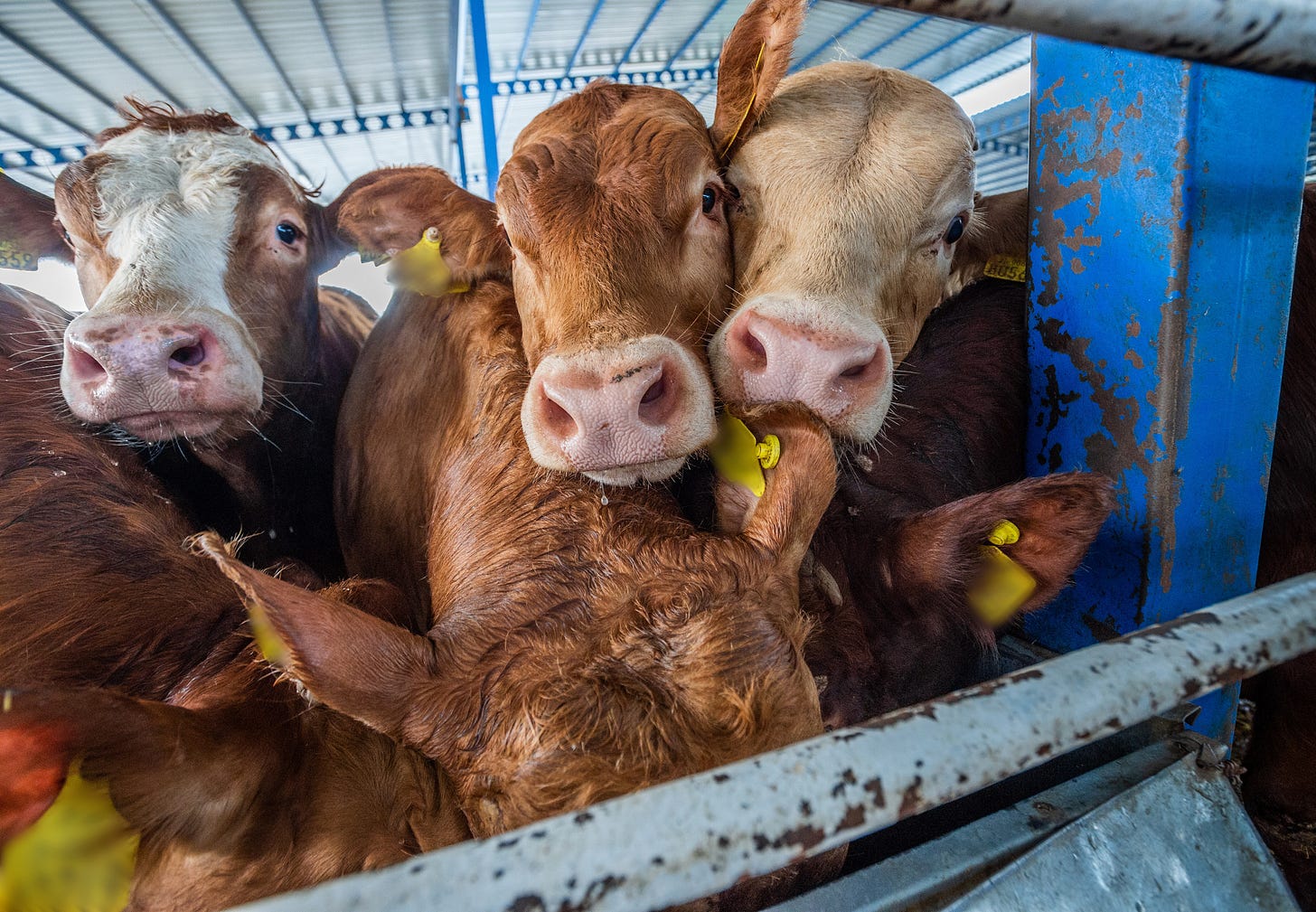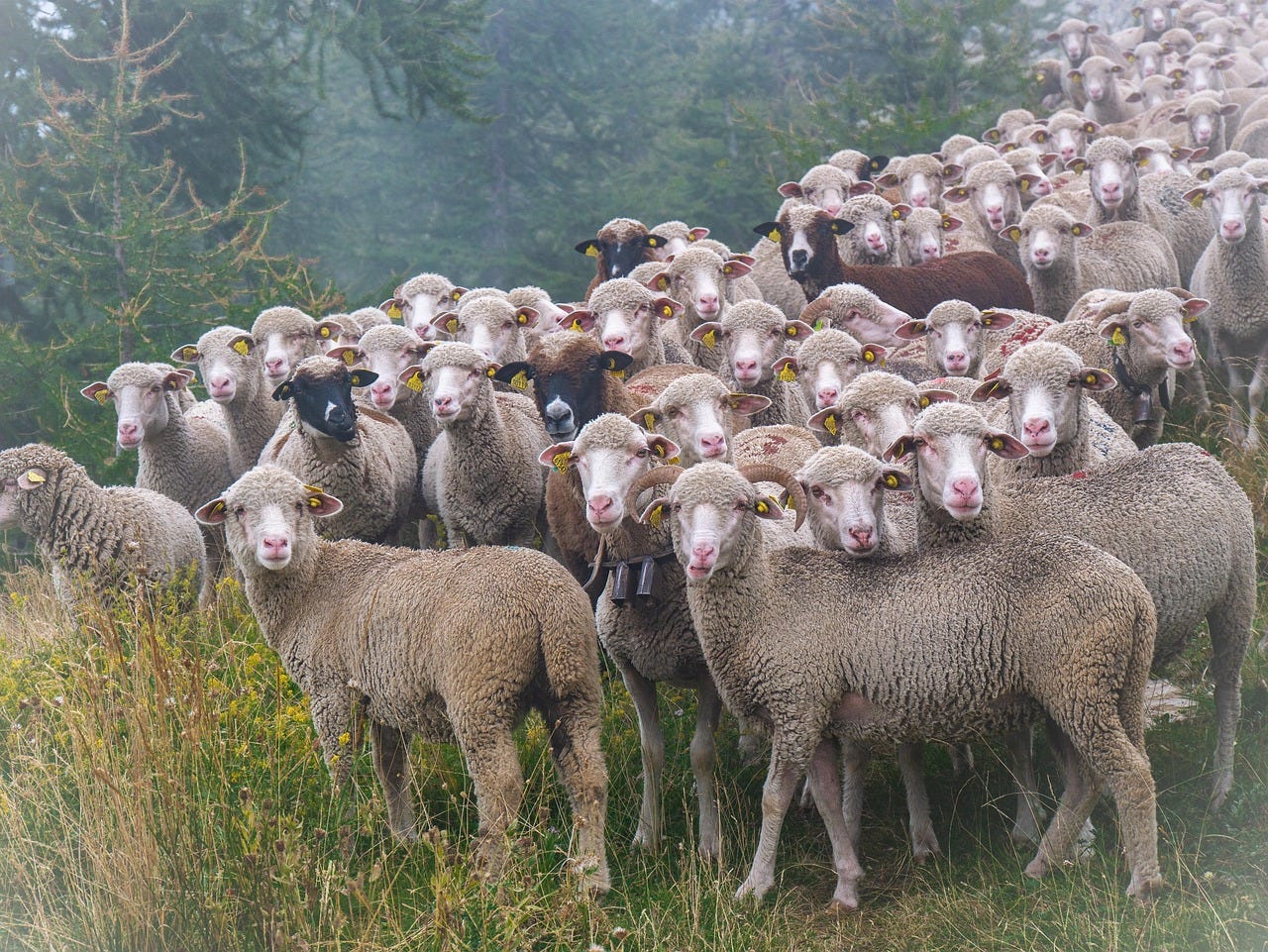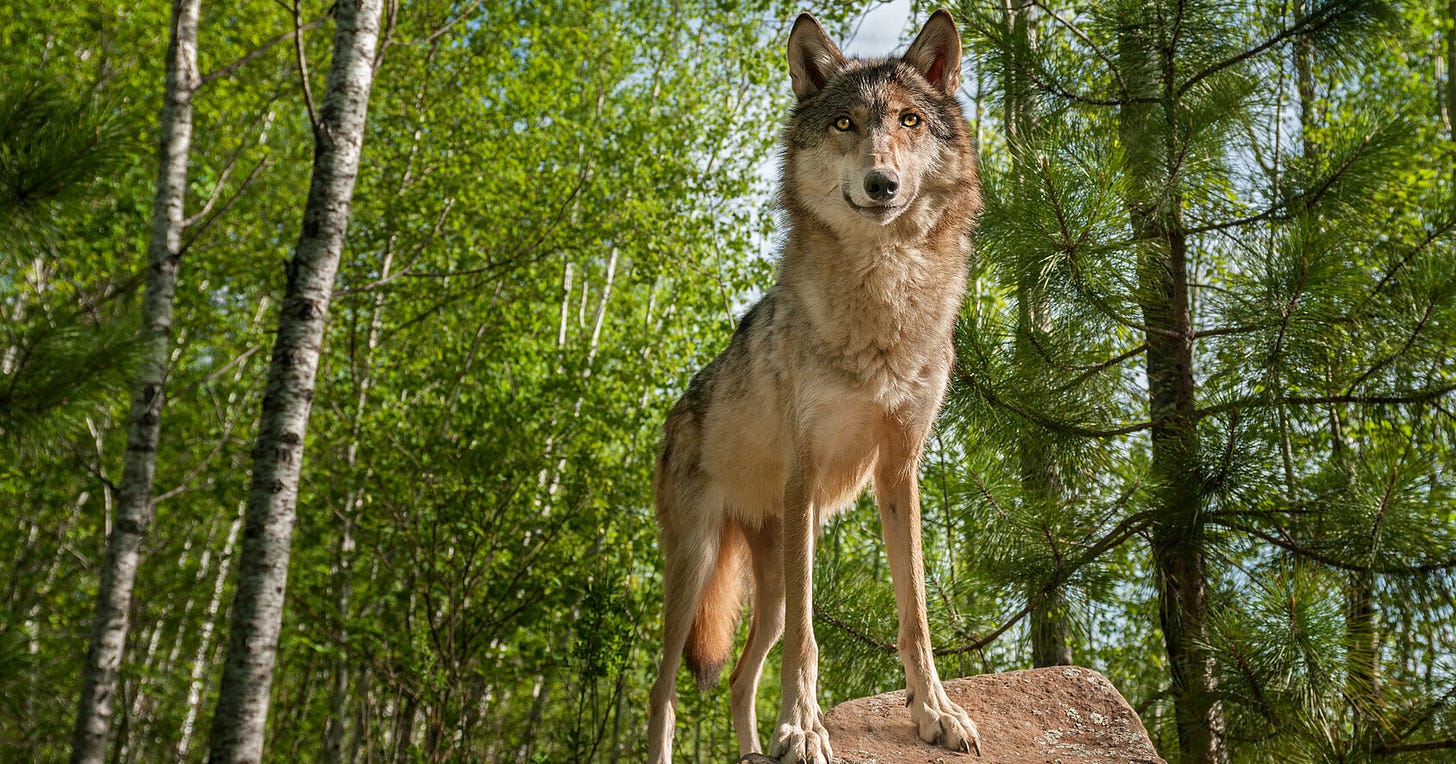Natural predators cause a mere fraction of livestock deaths in Europe
The messaging around livestock kills by natural predators is all wrong. By means of omissions and lack of context and data, the wolf is seen as a major threat - it couldn't be further from the truth!
To begin with, let me be clear in saying that yes, of course, wolves (and other large carnivores) are responsible for some livestock deaths. But these are invariably blown way, way out of proportion and given a focus that only serves the fearmongering lobbies intent on eradicating these essential ecosystem engineers. As you will see, the truth is a very different one when you look at overall livestock deaths.
A tiny fraction of livestock deaths that happen outside of slaughterhouses are caused by large predators, while the vast majority are caused by diseases, accidents, extreme weather conditions, mismanagement, neglect, callousness, cruelty … and, in some countries, largely by domestic and stray dogs!
I’ve recently come across the European Commission’s work on large carnivores - ten excellent reports from Slovenia, Romania, Italy, Germany, Finland, Austria, Spain, France and Greece. The main findings were unsurprising and yet, as they were delivered without the context of overall livestock deaths, the communication delivered a massively misleading message.
The main findings
👉 while depredation increases with the geographical spread of the wolf to new areas, it does not necessarily increase with greater wolf numbers in one specific area. The relationship is complex and depends particularly on the availability of natural prey, landscape, and the use of protection measures.
👉 Overall the trend is, after an initial increase, for a decrease in incidents potentially linked to protection measures being put in place.
👉 Although their diet can vary, wolves are natural hunters of wild ungulates, but they also have a tendency to attack unprotected livestock. Extensively grazing sheep were the livestock species affected most frequently (over 50% of all incidents), followed by cattle and goats.
👉 Incident density and number of animals killed showed significant variation across the EU countries and within countries between regions.
The messaging
The below map depicts wolf-caused livestock damage trends (2018-2021) at the country level (a) and NUTS3 level (b) (NUTS stands for Nomenclature of Territorial Units for Statistics and is designed to collect and harmonize EU-wide regional statistics).
While all of this is no doubt properly sourced and valuable information - do me a favor and just look at the map, knowing that it represents “wolf-caused livestock damage trends” … it looks concerning, doesn’t it? It looks like wolves are wreaking havoc everywhere - and the color yellow even indicates an increasing trend! We’ll soon be overrun by wolves! Circle the wagons! Bring out the big guns! Fight for your lives! The wolves are coming!
This is clearly not the message intended by the scientists delivering this chart - but, since it is given without context, without preamble, without qualifying statement to begin with - all you’re left with is a visual that suggests that hordes of wolves are charging across Europe, devouring livestock. Again, look at the above findings, the opposite is in the statements - wolves, by a huge margin, prefer wild prey, and livestock, by a huge margin, are not killed by wolves.
To my mind, any such report should have to start with perspective. What are we actually talking about here? Big picture. How many deaths of sheep or cattle or goats overall, and how many are due to wolves? With that preamble, that opening statement, a reader wouldn’t be led down a very misleading path. Numbers are important, but unless you’re given the full picture, numbers can also greatly misinform, derail, inflame and destroy. When you talk numbers - it always has to be in relation to - without context, there’s no clarity, no sense.
Now then - to the big picture numbers
I was stunned when I discovered numbers relating to sheep deaths in Switzerland (I wrote about it here). Of about 350’000 sheep in Switzerland, between 200’000 and 250’000 are slaughtered annually for meat production. It is only since 2020 that numbers of livestock deaths in Switzerland have to be reported. The numbers are dramatic, but before I tell you - how would do you feel when you read:
“1’000 sheep killed by wolves and lynx in 2024”
That’s the number without context. The dramatic big picture numbers tell a whole different story: 98% (NINETY-EIGHT PERCENT!), a whopping 57’000 sheep in Switzerland died last year because of diseases, parasites, extreme weather, accidents and mismanagement (neglect, cruelty, etc.). The wolf is responsible for only around 2% of sheep deaths. The real headline should be:
“58’000 sheep died while in the care of farmers in 2024”
Now let’s look at Europe and livestock overall: The 2025 PLOS study states that “Our data reveal that ca. 19’000 wolves in the EU killed ca. 56’000 domestic animals per year.” That surely sounds massive, doesn’t it? Alas, it’s quite the opposite. The researchers go on to explain that there are about 279 million livestock animals in the EU - and that the livestock taken by wolves represent a miniscule 0.02%.
The numbers from an in-depth analysis by the European Union (The situation of the wolf in the European Union) are cited in WWF Europe’s fact sheet about wolves in Europe. And I quote: “… the European Commission concludes that the impact of wolves on livestock remains very limited on a large scale but it can be high at a local level, in specific areas. With 60 million sheep in the EU, wolf depredation results in an annual loss of 0.065% of sheep.”
The facts of the matter
In his post, Kriton Arsenis highlights the aforementioned 0.02% of livestock deaths wolves are responsible for annually. But he highlights more: of those 279 million livestock animals in Europe, roughly 14% of cattle deaths are caused by diseases, 4% die because of accidents. None of that ever makes it into the news. And how about this inconvenient truth - he shares that “stray and domestic dogs account for up to 62% of livestock attacks in some regions.”
The facts of the matter remain clear and you’ll find them stated again and again: Wolves prefer wild prey. Hey - here’s an idea: If you want fewer livestock losses, shooting fewer of the wolf’s natural wild prey would seem an obvious solution. We also know that protection/coexistence measures work. So, since wolves may occasionally go for unprotected livestock, why not protect the livestock you care so much about?
Those willing to take the time, can dive into country-specific numbers and will find the reports, analyses, charts and statistics. Unfortunately, you and I know that most people will never take the time to dive into the details. People, communities, regions, entire countries can be - and often are - rallied into action or outrage or advocacy or help or whatever else … by the power of headlines and images.
And that’s why, for God’s sake, we must counteract - downright combat - any reporting that paints large predators as monstrous villains when they are, in actual fact, a miniscule part in the large-scale death of livestock in Europe.
That’s it from me for now - happy weekend to ya.
Cheers,
If you enjoy the Rewilder Weekly …
… consider supporting my work. Your subscription will help generate the funds needed to realize a unique rewilding book I’m working on. And, of course, that subscription also ensures that the Rewilder Weekly will always keep going for those who cannot afford to pay. A thousand thanks!










